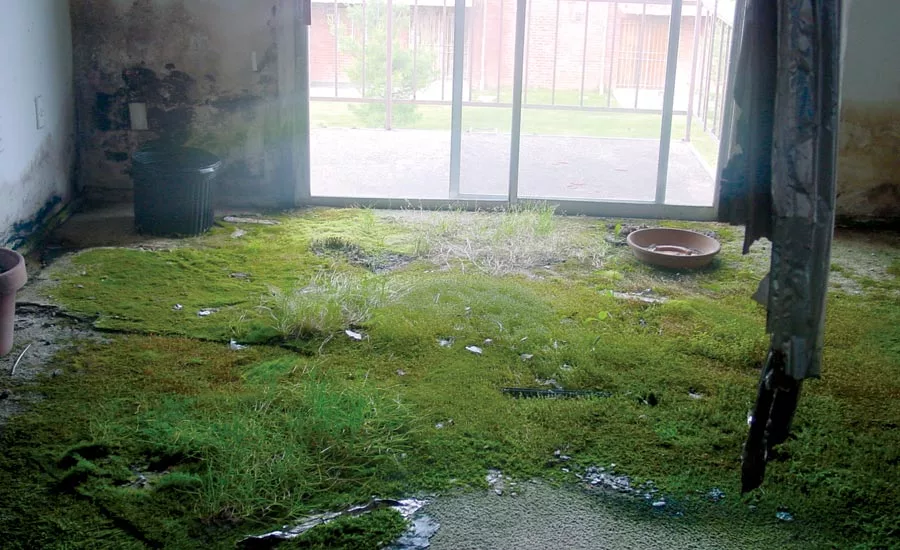Know When to Say No in Mold Remediation Projects

Image courtesy: Michael Pinto | Wonder Makers Environmental

Image courtesy: Michael Pinto | Wonder Makers Environmental
I really do feel sorry for somebody trying to learn the English language. One of the things that makes it so difficult is the large number of “homophones” - words that sound the same when spoken but are spelled differently and have different meanings. The most common English homophones are to, too, and two. Since they sound the same, the listener has to figure out which one applies based on the context of the conversation.
Another homophone which is more important to restoration contractors are the words “know” and “no”. Understanding the importance and power of these words is critical for all cleaning and restoration professionals, especially for those offering mold remediation services.
Knowing About the Standard of Care is Critical
As an example, think of the importance of the word “know” for someone who decides to offer services related to the investigation or control of fungal contamination. Although there are many regulations that apply to mold remediation work (employment rules, safety standards, fire codes, and the like) the core practices for professional mold removal and cleanup are determined by a standard of care. If somebody working in that field does not know of the existence of this standard of care, they may come to the mistaken impression that they can perform a mold inspection or remediation however they like because “there are no regulations”. In many such cases, the client who knows better has resorted to the legal system to get the mistakes corrected that such a naïve assumption by the contractor caused.
Mold professionals ‘in the know” also realize no single document fully describes the current standard of care. As good as the IICRC S520 or New York City mold remediation guidelines are, neither one completely captures all the details and nuances of the current standard of care. Therefore, if a building owner, insurance adjuster, or consultant insists that the contractor follow some detail in one of those documents that does not make sense in contrast to the bigger picture of the standard of care, the best response is to say no.
Saying No to Bad Work Plans Means Saying Yes To Good Work Plans
The simple truth of mold remediation projects and legal responsibility is that the contractor is ultimately accountable for the success of the project. Mold control professionals should not follow bad advice, even from someone with credentials. Doing something you know is outside the standard of care just because it is in the work scope or written remediation plan runs the risk of endangering the crew members, negatively impacting the occupants, and even damaging the building or contents.
Two real-life examples illustrate the importance of saying no to someone who does not know what they are talking about.
Example #1
A contractor responding to storm damage in Florida sought us out to provide some support to his “no” to an insurance adjuster. In this particular case the roof of a law office had been severely damaged in a storm. The second floor offices were flooded and power outages in the entire area kept water extraction and drying from starting for nearly a week. The initial response by a contractor who did not have the equipment and manpower to handle that size job added another week before the professional contractor took over. By that point, the gypsum board backing behind the hardwood mahogany paneling had developed extensive fungal colonies.
The contractor talked to the insurance adjuster about readjusting their reserves for the project. All of the mahogany paneling had to come down so that they could access the gypsum, with no guarantee that they could reinstall the original material in a fashion that would return the building to a pre-loss condition. In response, the adjuster instructed the contractor to leave the paneling in place and utilize an ozone flooding technique to kill all the mold behind the mahogany woodwork.
Knowing that following such a plan would put the occupants at risk for continuing health problems in the future from the “dead” mold as well as putting his organization at risk of a lawsuit from the occupants who were attorneys, the contractor solicited assistance in explaining the standard of care to the adjuster. Pointing out that multiple documents clearly state the use of gaseous ozone in place of physical removal is unacceptable helped to push the adjuster toward approving proper remediation. The deciding factor was some background information on the building occupants — a legal firm that had been successful in a number of high profile mold cases for the plaintiffs. Explaining that the policyholder was definitely in the know regarding mold helped the contractor’s “no” stand up under pressure.
Example #2
Another case where knowing better helped to support a “no” answer involved an apartment used for a marijuana grow operation. By the time apartment managers entered the unit, the crop had been harvested and all that was left behind was the interior that looked like a jungle. Grass and moss several inches high covered nearly the entire carpet. Multicolored fungal contamination, including large black patches that tested out as Stachybotrys, blanketed the walls and ceiling in a quilt-like pattern.
Because of the expected extent of the remediation, the property’s insurance representative was brought in. They provided a certified industrial hygienist to conduct the investigation and write the remediation work plan. The contractor who had a pre-existing service agreement to provide fire and water restoration services to the entire complex was presented with a mold remediation plan and immediately said no.
Although the work scope did require removal of all carpeting and interior finish gypsum board, it specifically stated that no negative pressure enclosure or bagging of the waste was necessary. The work plan instructed the contractor to open the sliding glass door to the balcony, allow outside air to dilute the indoor contamination, and toss the removed materials into a dumpster that was to be set up in the courtyard below. The hygienist even opined that the open door would minimize the airborne concentration levels to the point where workers did not have to use personal protective equipment. To support their viewpoint the consultant noted there were no current permissible exposure levels for mold or regulatory mandates regarding remediation practices in that particular state.
The contractor involved explained how the standard of care is designed to protect nearby occupants. The hygienist’s belief that the firewalls separating the various apartments would keep any contamination from entering adjacent spaces was countered by both contractor and the apartment maintenance staff who knew from experience that even block firewalls under the finish material are rarely airtight. In that case, knowing from experience was more important than knowing from a textbook.
Not knowing all the salient details was also important to saying no to the idea of throwing un-containerized waste from the second floor balcony into a dumpster. Just asking the consultant if they knew all of the underlying health issues of all of the apartment dwellers that surrounded the courtyard where the dumpster would be was enough to get them to rethink the cost-saving measure of handling mold-contaminated debris in that fashion.
Know and No Often Go Hand-in-Hand
There are many more examples I could share about mold remediation contractors who have used their “know-power” to support their “no-power”. Many mold remediation professionals are even extending their know how in order to say no to a potential client who they know from experience will not be a good match for their type and quality of services. This proactive use of the word no may seem like it is giving up business, but in many cases knowing when to say no will save your business.
Looking for a reprint of this article?
From high-res PDFs to custom plaques, order your copy today!







